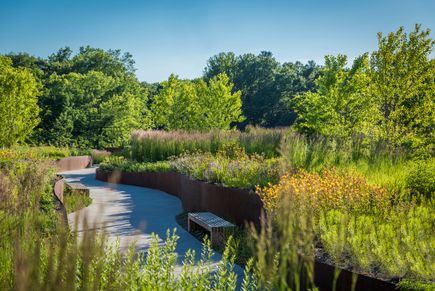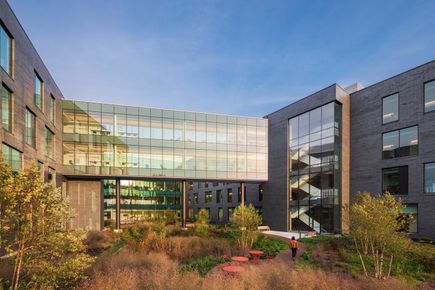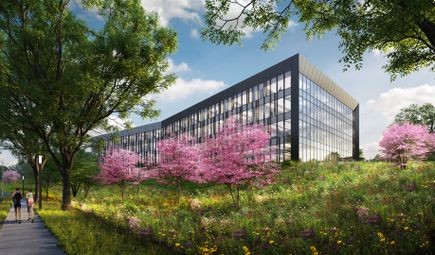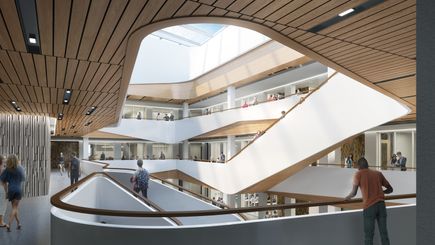Biophilia in Fall: An Everlasting Vision of the Ever-Changing View
Share
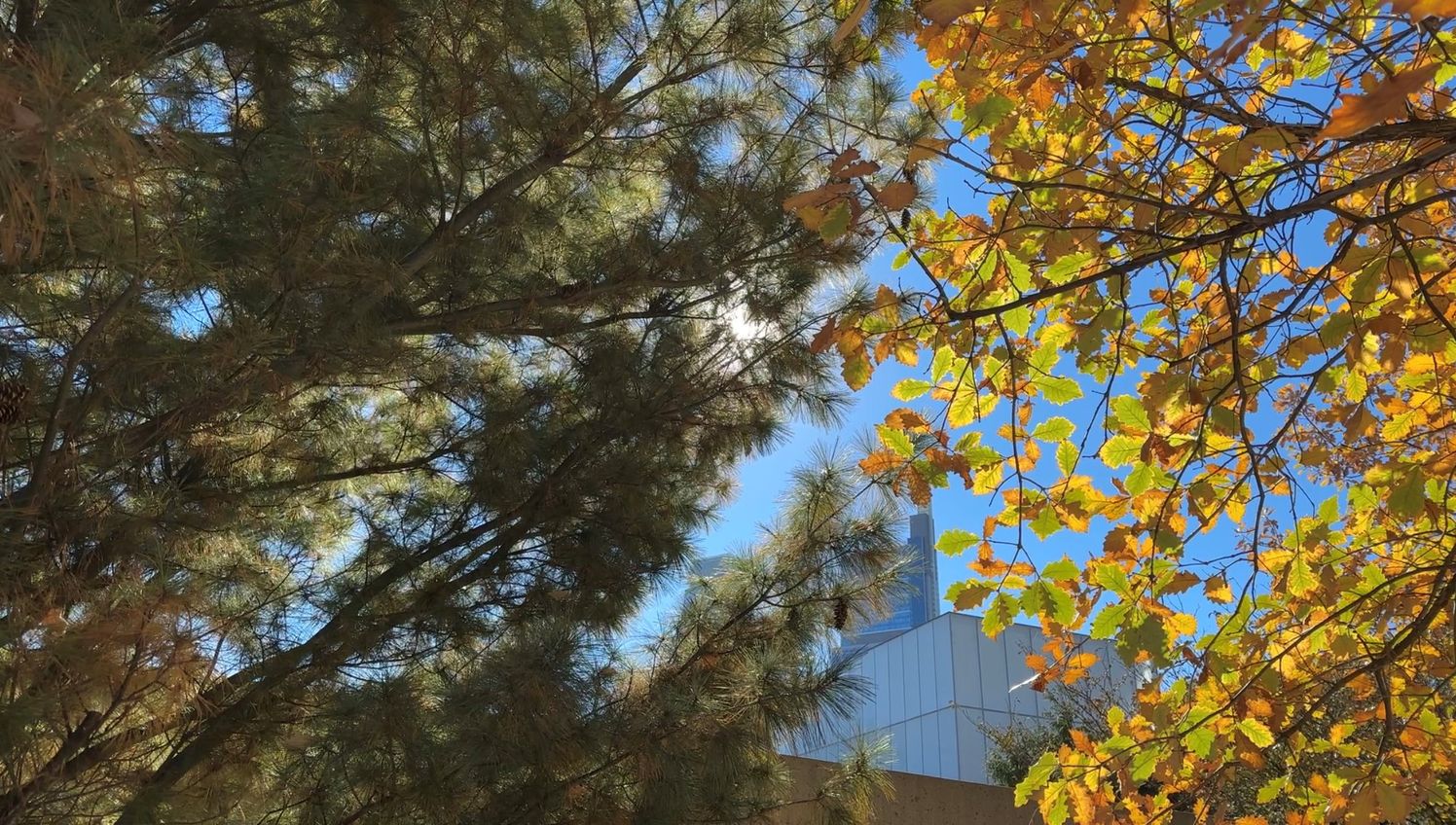
Successful buildings are well-built, functional, and efficient. But they are also understanding, and nourish the complex experience of being human. Biophilia is the theory that people possess an inherent affinity for nature, developed over the course of human evolution; in recent years, studies have revealed this inclination to be a vital component to health and wellbeing. Though people and the natural landscape are complex, there are a few points of biophilic connection that are generally agreed upon. They include
- Connection with Nature
- Presence of Water
- Sensory Stimuli
- Dynamic & Diffuse Light
- Connection with Natural System
- Complexity & Order
- Prospect & Refuge
Many of these connection points can be enjoyed easily during periods of warm weather by throwing open windows, strolling through parks and woods, or just stepping outside to go from one place to another. Many daily routines can involve a connection with nature, glimpses of water, and the palpably positive effects of sunshine throughout the day.
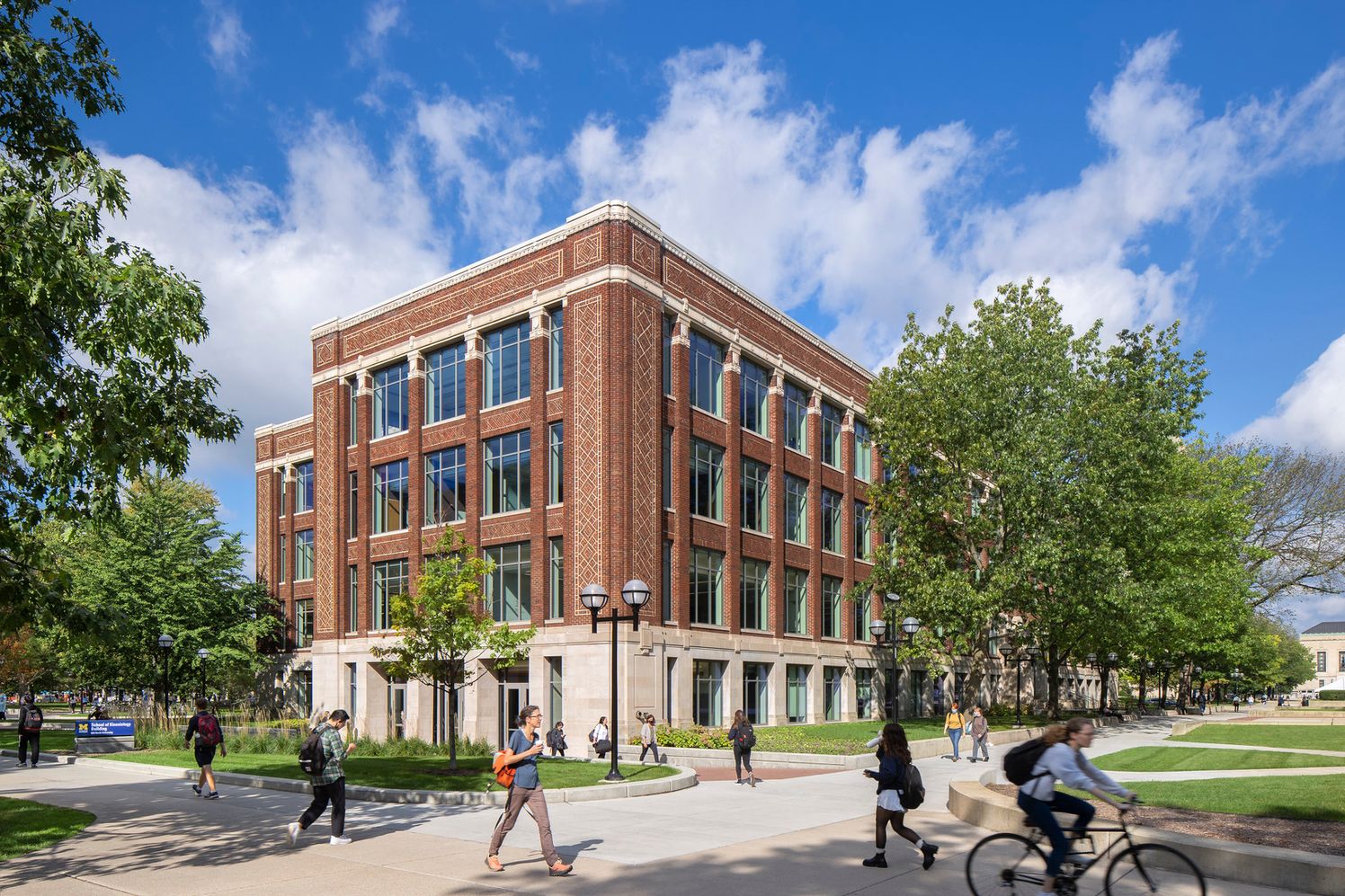
Students and staff can see the beauty in a typical spring day at the University of Michigan’s Kineseology Building.
In fall, though, the desire to connect with nature is met with fading daylight, colder temperatures, and more time indoors—an environment that’s the exact opposite of we might like to venture out in. This, says Ballinger Senior Principal Eric Swanson, AIA, is where biophilia-informed building design can really contribute value to the human experience. Tropical greenwalls and robust indoor landscaping are two approaches that respond to biophilic principles year-round in northern climates.
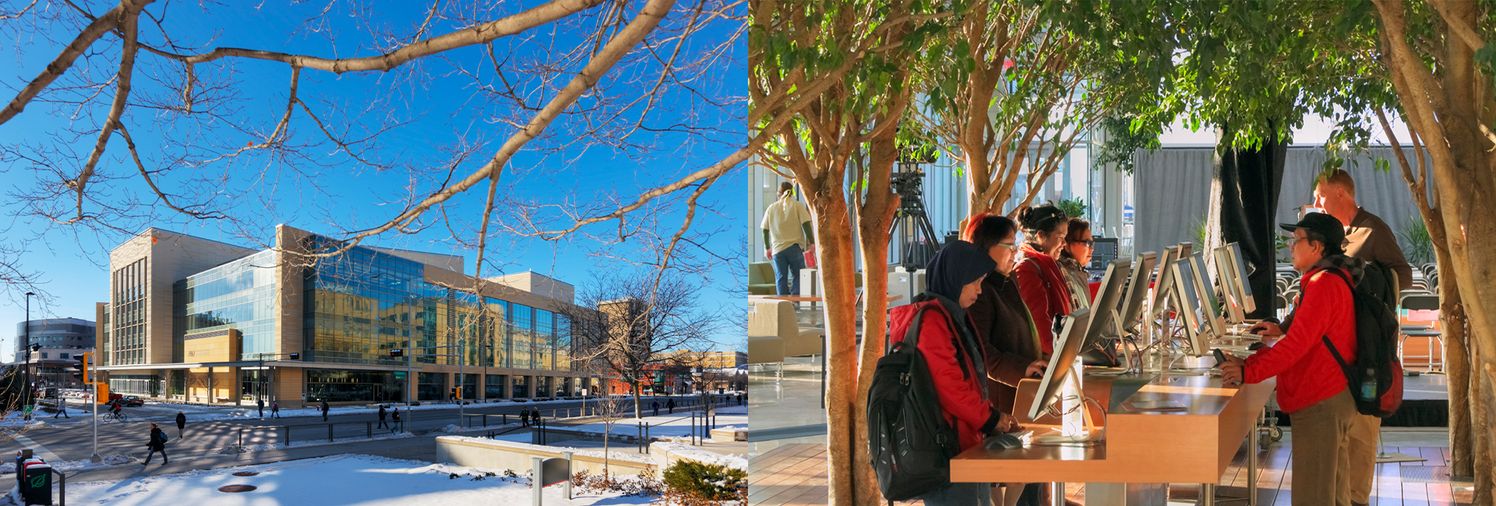
It may be a Wisconsin winter outside, but inside the Wisconsin Institutes for Discovery enormous ficus plants connect visitors to the tropics.
A third, however, is through the building’s design itself: elevated views, long and short vistas of the natural world, and a building site that allows diverse flora and fauna to survive winter conditions. Eric specifically points to the biophilic concept of Prospect and Refuge, which suggests that humans are evolved to seek environments where an open view (prospect) can be seen from an area of shelter (refuge). “The ability to take shelter from the elements while staying visually connected to the outdoors is an integral part of architectural design, and is present across all the communities we serve. People tend to spend less time indoors in spring and summer, but I think most people in the Northeast are familiar with the coziness of being inside and looking out during a blustery autumn day or an early nor’easter.”
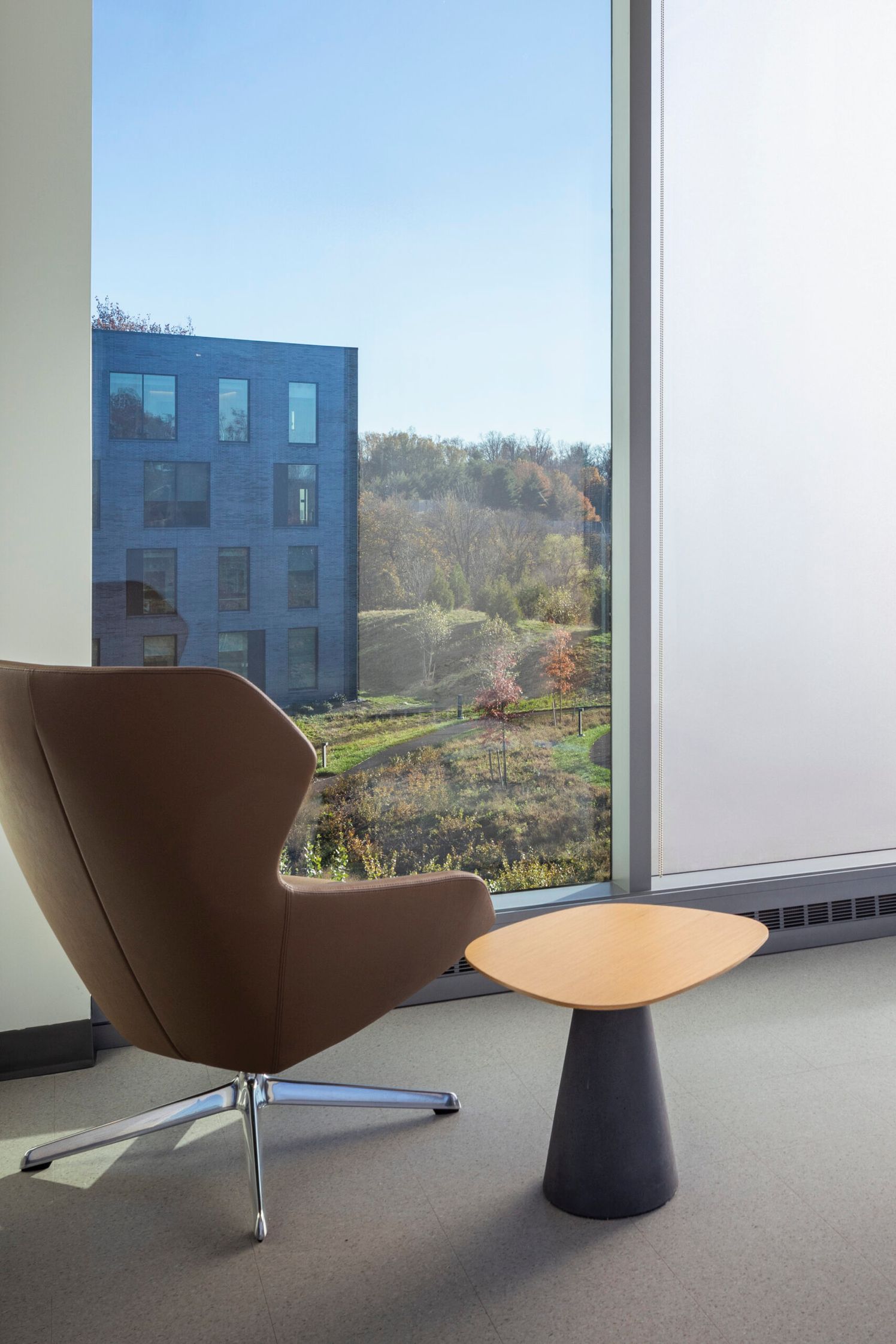
A great nook: this window gives a sweeping prospect as a deep armchair conveys the private sense of refuge.
“It might seem counterintuitive, but in this sense buildings can actually give people the ability to stay in touch with nature,” says Eric. “Especially in fall and winter, while we’re spending more time indoors, it’s an opportunity to reflect on movement and texture in the landscape. In the fall and winter, we get to see the structure and complexity of bare tree branches, colorful berries, and wildlife flocking to dried flower heads and seeds. The list goes on, and it’s truly remarkable.”
Ballinger’s work at the Barnes Museum, Swarthmore College’s Singer Hall, and Penn Medicine Radnor is designed to look outward and connect with nature. We invite you to look with us as the natural world begins to change—
